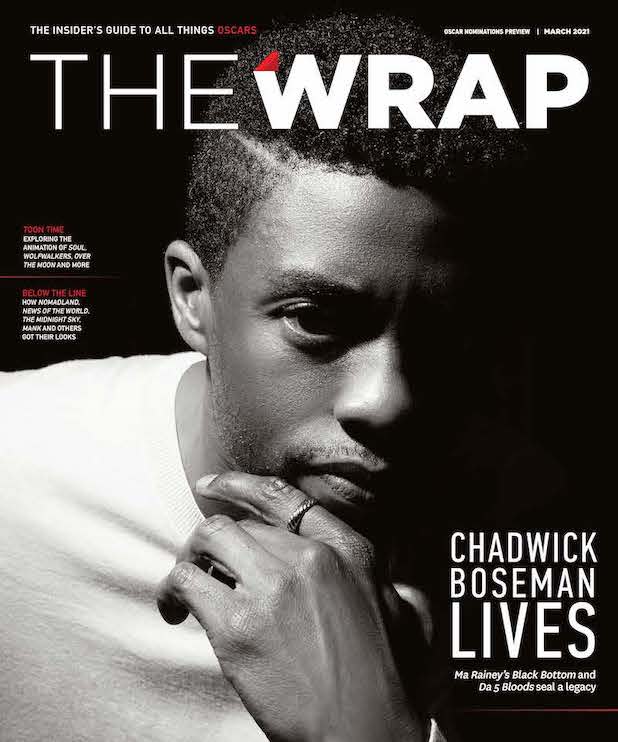‘Ma Rainey’s Black Bottom’ Hair and Makeup: How Viola Davis Was Inspired by Bette Davis’s Classic ‘Baby Jane’
A version of this story about “Ma Rainey’s Black Bottom” appears in the Oscar Nominations Preview issue of TheWrap’s awards magazine.
Makeup artist Sergio Lopez-Rivera’s relationship of trust with Viola Davis was cultivated over six seasons of “How to Get Away With Murder.” And therefore, in the early days of making “Ma Rainey’s Black Bottom” — starring Davis as the real-life 1920s blues singer — the actress sensed a trace of hesitation in Lopez-Rivera’s hands.
“At that first camera test, I was tweaking the makeup to make Viola look better,” he recalled. “And she said something to me I’ll never forget. She said, simply, ‘Bette Davis in ‘What Ever Happened to Baby Jane?'”
That reference to the 1962 thriller about a grotesque former child actress clicked instantly for Lopez-Rivera. Viola Davis’s Ma Rainey isn’t an unhinged antagonist like Bette Davis’s Baby Jane (who serves her sister, played by Joan Crawford, a dead rat for lunch), but the connection between them is hard to be miss once it has been pointed out.
“Ma Rainey was very sensual but she also liked making people uncomfortable with how she looked,” he said. “And (the reference to Baby Jane) was Viola saying to me, “I, Viola, am giving you permission to really go there.'”
He continued, “I can’t think of another modern actor aside from Viola who would be so bold. It requires a certain willingness to really own her work. So many actors are afraid of pushing their own artistic boundaries. Viola isn’t.”
Lopez-Rivera’s job incorporated five elements: Davis’s smooth skin was etched to add pigmentation; her eyebrows were drawn in a vaudevillian pencil line; gold teeth were fitted in her mouth; mascara and blush were precisely applied to appear sloppily applied; and various serums and gels gave the illusion of beading sweat on her face and upper chest. “Watching Viola become Ma was an architectural process,” Lopez-Rivera said.
Ma Rainey’s gold teeth were manufactured by the same special effects department that did work on “How to Get Away With Murder,” especially the series finale in which several characters were aged. “They already had a mold of Viola’s teeth,” Lopez-Rivera said. “The first set we tried had a lot more gold in the bottom teeth, but it was so much gold that it was distracting, so we went with the slightly less heavy version.”
The body padding and elaborate costumes by Oscar-winner Ann Roth were then topped with Ma Rainey’s on-stage wig, a pièce de résistance created by hair designer Mia Neal from a horse mane she found on Etsy.
“It came covered in manure and lice eggs,” Neal said. “So I boiled it and set the wig on rollers, then boiled it again. But horsehair is very thick, so every time I pulled one hair through the lace, it would scrape off the manure. There was plastic sheeting everywhere to prevent contamination. It was a trip.”
Neal devoted 60 hours to the wig’s creation. “And that was 60 hours over three or four days,” she said. “We didn’t sleep much.” For the artist, a veteran of Broadway productions including 2018’s revival of “The Iceman Cometh” and 2020’s “West Side Story,” the hair was an essential part of understanding Ma Rainey’s psychology.
“Horsehair wigs maintain their set. And we guessed that this wig was important to Ma to have while traveling, not knowing if she was going to be in a city where she could get service. And it was glamorous. This was a woman who wore fur coats in the summer, who had gold teeth, who was married and also had a girlfriend. She was from the rural South and had access to things she’d never had before. She was going to have everything that people tried to deny her.”
Indeed, like Lopez-River, Neal stressed the importance of Davis’s commitment to tackling the role of Ma Rainey honestly.
“During one of the early wig fittings,” Neal remembered, “Viola said to me, ‘In this time period, Black women weren’t often described as being beautiful. But in this particular case, everyone made a point of saying Ma was unattractive. So we have to listen to that.’ How often do you get permission to do that with an actress?”
But Neal pointed out that Davis was not simply commenting about Ma Rainey’s appearance. The actress was making a more profound point about the character and how society still views women, especially Black women, who don’t confirm to accepted beauty standards.
“Some people who watched the film have said to me, ‘Oh, she’s so oily and it’s hard to see Viola like that,'” Neal said. “But you’re getting the same experience that people watching Ma Rainey’s shows in the 1920s got. The sweat was flinging off of her and spraying into the crowd. That can be jarring, for sure. Ma was used to that. She probably made people uncomfortable even when she was small, being fierce and dark-skinned. She didn’t care and there’s beauty in that discomfort.”
Read more from the Nominations Preview issue here.
Read original story ‘Ma Rainey’s Black Bottom’ Hair and Makeup: How Viola Davis Was Inspired by Bette Davis’s Classic ‘Baby Jane’ At TheWrap

